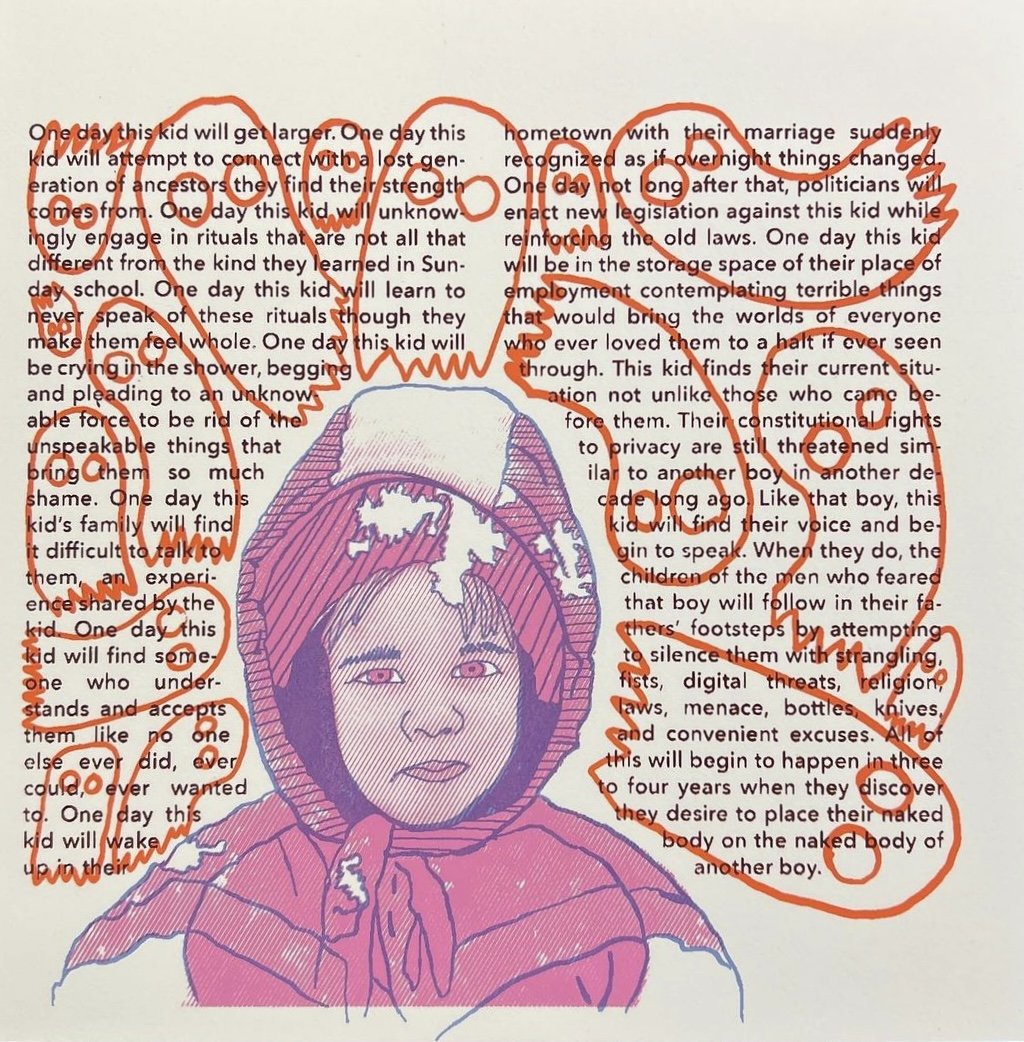haunting
I’ve long discussed my interest in print media relates to a religious upbringing, likening print techniques to rituals used in the church I grew up in. The same, if not incredibly similar, gestures, materials, and processes have been practiced both by those centuries ago and people today. In this way, I evoke the language of printmaking to explore what haunts us. A haunting is a reminder, sometimes vengeful, often sorrowful, but mostly it is an echo of a thing it once was. A residue.
a repetition
Ghosts evade time. A haunting is an echo of the past, returned to the present, and speaks to our futures. We tend to try and exorcise ghosts, but more often than not this is a vain attempt at hiding our mistakes and shame. I am attempting to explore the ghosts I find haunting us through temporal distortions, printed matter, and other strange objects.
collaborations with Vincent
These works were created during my residency at Millay Arts in July, 2023. I crafted a séance using tips and how-to videos from the internet, then used a drawing planchette to connect with queer ancestors. I let them guide the colored pencil marks they left on the page, then later worked back into them using ink and collage. I never asked their names.































